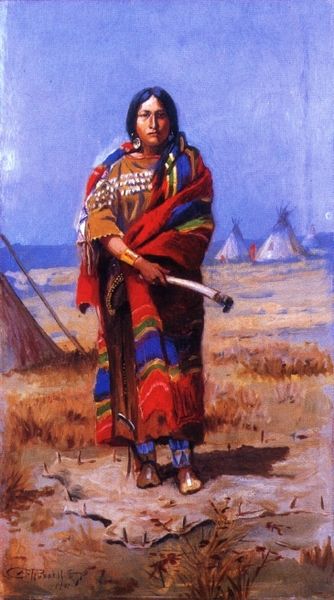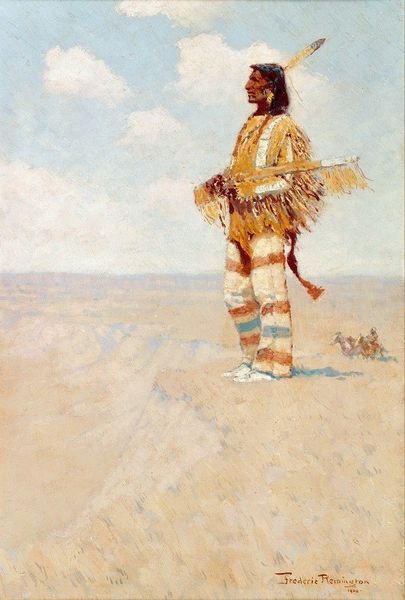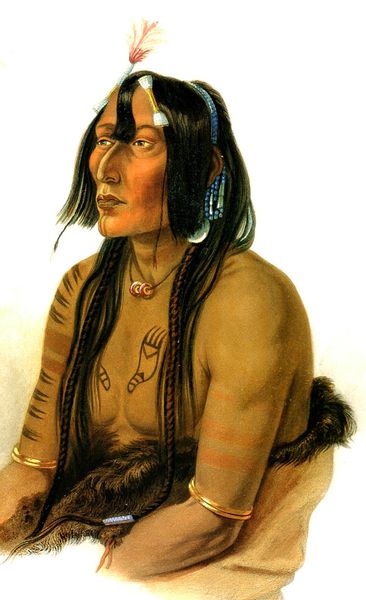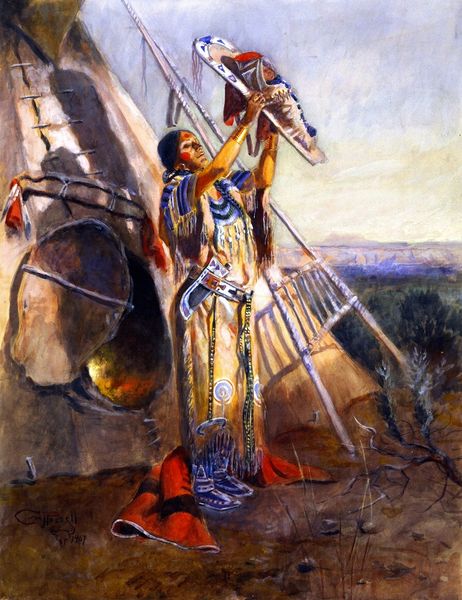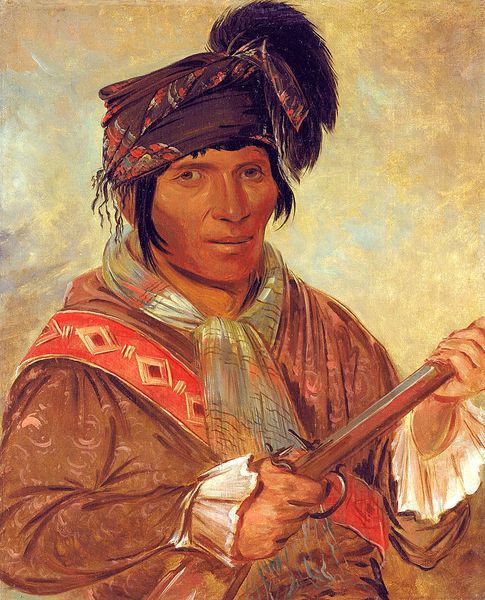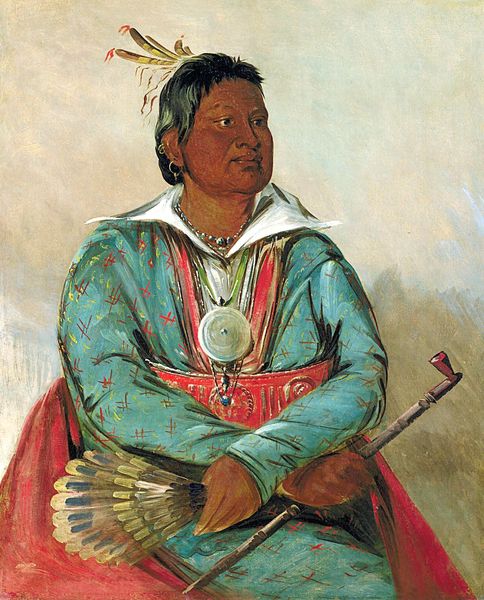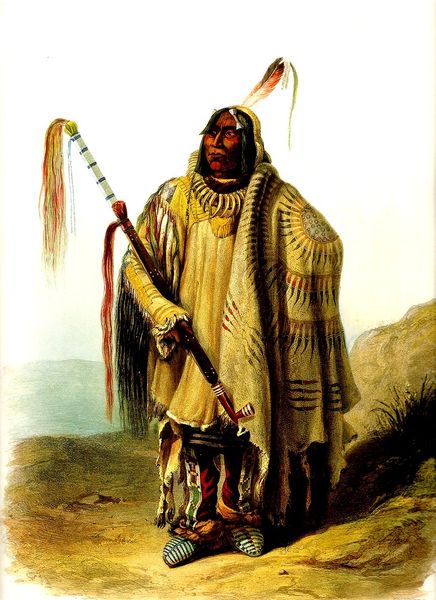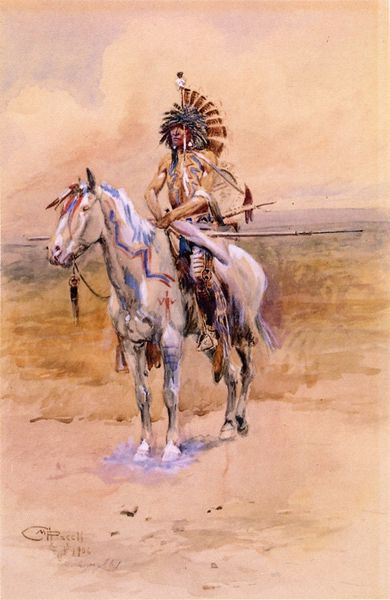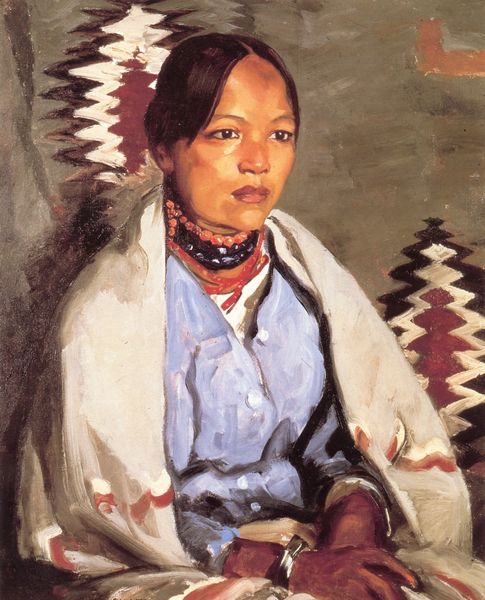
painting, oil-paint
#
portrait
#
painting
#
oil-paint
#
oil painting
Copyright: Public domain
Curator: This is "Indian Buck," an oil painting created by Charles M. Russell in 1901. Editor: My initial response is one of stark, almost unsettling composure. He seems to occupy a liminal space—part of this earth, and also set apart. Curator: Russell's work often presents a romanticized view of the American West and its inhabitants. Understanding this particular piece requires unpacking the visual language he employs, specifically, how Indigenous identity is represented within the context of early 20th-century America. Editor: Indeed. Let’s consider Russell's personal role. How did his background as a white American man inform the power dynamics in the depiction of an Indigenous man here? Curator: Absolutely. What institutions and cultural expectations are at play that frame the subject within the artistic traditions? For instance, the emphasis on his garments—the intricate blanket and moccasins—can be read as fetishizing Indigenous cultures while perhaps overlooking the socio-economic realities these individuals were facing at the time. Editor: I notice that despite the supposed ‘realism,’ there’s a calculated flatness to the backdrop. Does this simplification erase the complexity of the Native experience? And how does the overall painting reflect the political environment of the period? Curator: The piece also presents the subject alone, a figure disconnected from community, set against a somewhat barren landscape. This representation could reflect the increasing displacement and isolation experienced by Native Americans due to colonization and westward expansion policies. We also have to consider if this artwork promoted specific ideological viewpoints, like assimilation? Editor: So by looking beyond Russell's intentions, we reveal that this portrait provides commentary on not only Native identity, but also on settler-colonial desires, even, to shape perception. Curator: This piece serves as an invitation to consider these important questions. We can also evaluate the work's continuing cultural relevance when we address concerns around appropriation and the authentic depiction of marginalized peoples. Editor: Right. It forces us to reflect on representation and historical narrative as a continuously unfolding process.
Comments
No comments
Be the first to comment and join the conversation on the ultimate creative platform.
